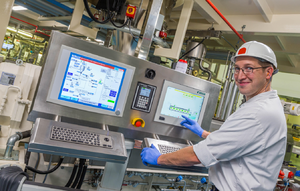Difference between revisions of "Pet Food Safety and Quality"
| (One intermediate revision by the same user not shown) | |||
| Line 57: | Line 57: | ||
|date = April 2017 | |date = April 2017 | ||
}} | }} | ||
| − | |||
| − | |||
[[Category:Pet Food Manufacture]] | [[Category:Pet Food Manufacture]] | ||
[[Category:To Do - Nutrition]] | [[Category:To Do - Nutrition]] | ||
Revision as of 15:40, 9 May 2017
While each pet food manufacturer has their own recipes, there are pet food safety standards and regulations that all manufacturers must comply with.
Practical advice is also available to help veterinary professionals establish the credentials of a pet food manufacturer. The World Small Animal Veterinary Association provides a check list that helps with evaluation of the credentials of a pet food manufacturer and is a useful resource for both veterinary professionals and owners.
A responsible pet food manufacturer will take safety and quality very seriously and will have their own defined processes and standards that help ensure the safety and quality of their ingredients and products.
These should start with reliable suppliers and cover the whole process through to feeding the cat or dog and are likely to include:
- Selection of reliable suppliers - companies that supply ingredients are regularly inspected by responsible pet food manufacturers to gain “supplier approval”.
- Defined specifications for raw materials and regular inspection and testing against these – may also require a certificate of analysis from the supplier.
- A clearly defined specification for the product that includes nutritional profile, colour, texture, digestibility and palatability and technical parameters such as moisture content. Routine testing of product against specifications.
- Visual inspection of milling process.
- Precise measuring of raw material quantities ensuring accuracy versus recipe.
- Carefully controlled cooking temperatures and times.
- Regular sampling and testing of finished products.
- Recording of recipe ingredients through batch records, and of finished product pallets and their destinations to ensure traceability.
- Established microbial testing routine for both finished product and manufacturing facilities.
- Regular checking of packaging integrity, which may include continuous monitoring through cameras.
- Metal detectors and even x-ray machines to locate foreign bodies within finished product.
- Verification of nutritional adequacy via chemical analysis of raw materials and / or finished products and / or feeding studies using approved Association of American Feed Control Officials (AAFCO) protocols.
A responsible pet food manufacturer may also choose to implement external audits and voluntary certifications such as ISO 9001:2008 and ISO 14000 through an external accreditation institute.
A pet food company can obtain information and guidance about appropriate auditing and certifications from a selection of organisations including:
- GHP (Good Hygiene Practice)
- HACCP (Hazard Analysis Critical Control Points)
More information about the safety and quality standards that apply to a particular product can be obtained by contacting the specific pet food manufacturer.
| This article was: Date reviewed: April 2017 |
